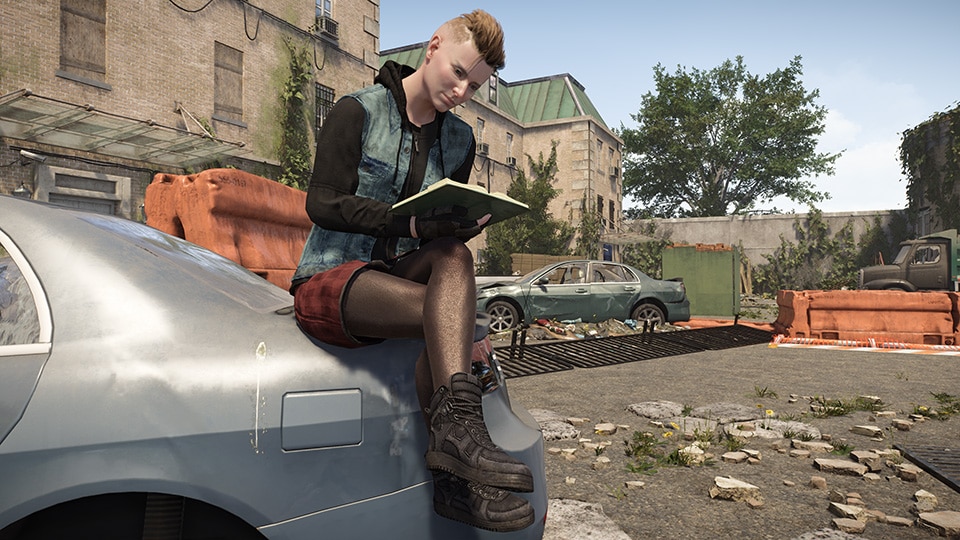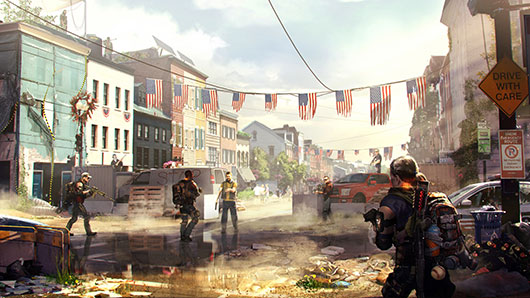April marks Autism Awareness Month, and to raise awareness this article will explore characters like Birdie and Claire. While these characters by no means represent the full spectrum of autism, each provides their own unique piece of autism representation.
![[TD2] News - Celebrating Neurodiversity: Autism Representation in The Division 2 - manhunt lineup](http://staticctf.ubisoft.com/J3yJr34U2pZ2Ieem48Dwy9uqj5PNUQTn/6MkWbbd8D8VZRwmmqneaml/c03f03070c71446d21d14f0b6ba96484/1._Y5S2_manhunt-lineup.jpg)
Birdie is a newer character in The Division 2, introduced in Year 5: Season 2 - Puppeteers. Initially needing rescue during The Recruiter manhunt, Birdie reveals herself to be a technical genius in need of a challenge.
"Birdie is our savant Stanford engineering genius who went to college when she was 12," says Lauren Stone, narrative director for The Division 2. "She has dedicated her life to creating alternative power solutions, and she's built this industry called ODEA Tech with her 'brother,' Vikram Malik."
According to Stone, Malik is one of the most disliked characters in The Division 2, his behavior and unexplained betrayal to the Black Tusk earning him the nickname Vik the Dick both in-game and among players. Birdie was created to explain Vikram's betrayal, as well as flesh out the siblings' backstory as defense contractors and their company ODEA.
Birdie is self-diagnosed with autism; as Stone describes her backstory, she was too old to have received a proper diagnosis, having attended Stanford before Asperger's was a diagnosis, and seen as "one of those weird kids who's super smart."
"When you meet an autistic person, you've met an autistic person. You have not met autism," says Stone. "Birdie is a singular representation. I fully expect Claire is also on the spectrum, but she presents as more neurotypical."
Stone describes Claire, another character in The Division 2, as Birdie's mirror (coincidentally, Madison Walsh voices both characters), naming a scene where Claire has to work with ODEA Tech, and refuses to work with Vik - but agrees to work with Birdie.
"The two autistic kids were like, 'yeah, no, we can work together. It'll be fine; other people are offended, but we're not,'" Stone laughs. "I think that's where, even though we haven't said Claire's autistic, I fully expect her to be somewhere on the spectrum. I think it's representative of a very common experience where the neurotypical people can work with each other, and Birdie and Claire love working together because they're both 'neurospicy.' They understand how to challenge each other and help each other grow, and see the benefit of supporting each other. And then we just have these two brilliant women making everything possible."
REPRESENTATION MATTERS
"When you meet an autistic person, you've met an autistic person. You have not met autism."
According to Stone, including diverse perspectives in games helps flesh out the story and experience in new ways. In The Division 2, the playable character has no voice; the player is the Agent, and they decide how they feel about the world. However, including a diverse cast of characters - including neurodivergent ones like Birdie - allows the developers to show different viewpoints about the world and how the world responds to them.
"That in and of itself opens the door to make it so that it's easier to tell different parts of the same story, and different perspectives on the same story, because everybody sees a singular event through their own personal lens," says Stone.
As we discuss neurodiverse representation in games, it's crucial that it comes from a place of authenticity. It's about focusing on the character as a person first rather than a diagnosis, enhancing the authenticity of the narrative and allowing all players to find characters with whom they can identify and from whom they can learn.







